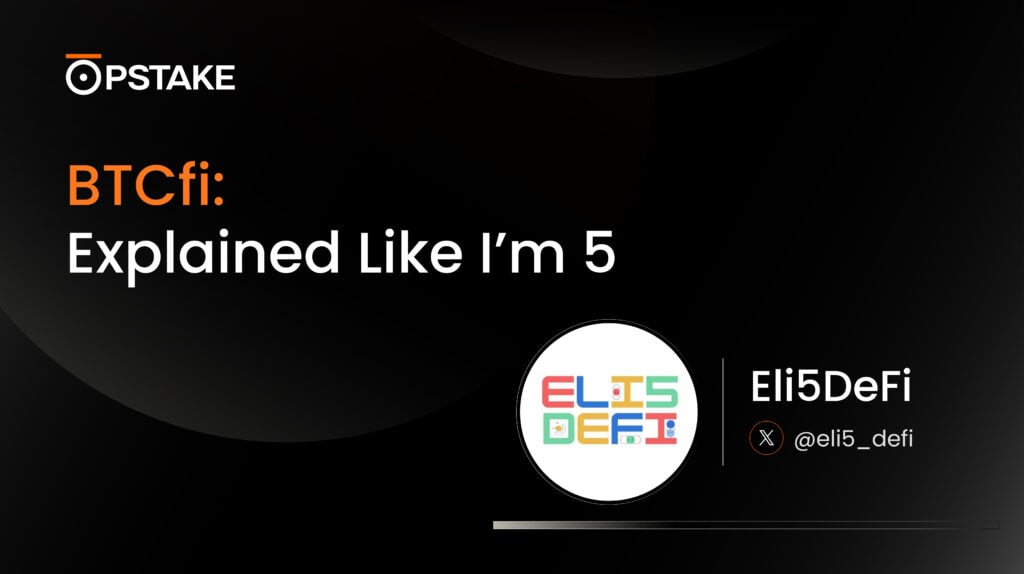Economic Security is a meme, and Babylon is winning this meme competition.
This (long) post comes from a “hot take” I posted last week on @eigenlayer vs @babylon_chain that spurred very opinionated discussions (something I’m really enjoying since starting @Stacked_Podcast).
Today, I’m trying to answer why economic security is a meme, the case for Babylon, and listing down critical differences between EigenLayer and Babylon (something you won’t find anywhere else).
Before we dive in, these are merely my thoughts and observations based on my research and understanding. I am not too smart; I am just curious and think out loud.
Is Economic Security a meme?
‘Economic Security’ has been one of the most discussed phrases in crypto in the past few months. Restaking by EigenLayer, Shared Security by the Cosmos Hub, BTC Staking by Babylon, and Mesh Security are the driving forces behind these conversations.
Although a good indicator, economic security does not tell the whole story and is often misinterpreted and exaggerated. Economic security is one part of a protocol’s overall robustness, including consensus mechanism, blockchain’s bonded ratio, decentralization, float of the token that secures the chain, feasibility and economic benefit of carrying out malicious attacks like a 67% attack, and more.
Economic Security ≠ Market Cap ($) of the token(s) securing a protocol
The current fuss about economic security stems from the problem statement that “it is too expensive for new/existing protocols/chains to establish a trust network to attract users”. A ‘cold-start problem’ but for trust.
Shared Security allows a socially trusted, high-market-cap asset to rent its economic security to those needing to strengthen their overall security. There are two leading security providers today for the two biggest crypto assets today.
@eigenlayer
– Restake $ETH -> Secure AVS -> Earn Rewards
@babylon_chain
– Stake $BTC -> Secure app chains -> Earn Native Staking Rewards
For new protocols, shared security aims to provide an economically viable alternative for safeguarding itself. For existing protocols, shared security aims to reduce economic expenditure (in the form of native token staking/inflation) while hedging security.
While both these types of consumers (new and existing customers) offer yields, a significant difference lies in how these two major shared security providers (EigenLayer and Babylon) create this trust marketplace and how meaningful they are in the first place.
The feasibility of overcoming economic security is more critical than economic security itself. I will left-curve this and say that economic security is, indeed, a meme.

The Case for Babylon
A significant constituent of viable and reliable shared security depends on the supply-demand dynamic.
Consumers (demand) want adequate security. Providers (supply) want higher yields.
While demand (finding security consumers) can be created through the premise of alignment, BD, and more, the supply (locking up of assets) can become trickier without compelling yields for one to take on additional risk.
This is where things get interesting.
With EigenLayer, AVS may face two mechanism-breaking hurdles:
1) Not enough yields to receive security support from operators
2) Not enough economic security in the system for it to launch in the first place
Yields stem from an AVS token or its organic usage, both at a nascent stage to predict a positive cash flow for EigenLayer’s mechanism. Besides, if an AVS were to incentivize economic security with its tokens, a better alternative exists in the form of app chains.
Not to mention that EigenLayer’s supply side will always be fighting against the basic ‘risk-free’ rate of ETH staking and ETH in DeFi, in addition to yields from competitors in the future (Lido?).
Speaking of app chains, Babylon’s offering primarily focuses on further safeguarding existing chains, which is more in line with the philosophy of ‘abundant economic security.’ By increasing a chain’s security robustness with #BTC, Babylon adds a hedge without harming its token’s most extensive utility.
From an app chain’s perspective, it allows aligning with Bitcoin by exposing BTC holders to their chain’s native token. Not only that. It also presents app chains to re-think their inflation model (something that has set back app chains in the past to flourish), complimenting its overall functioning.
Historically, chains like @osmosiszone and @cosmoshub have had high inflation to pay for economic security while their ecosystems and token utility were developing. In this bootstrapping phase, app chains often end up overpaying for security, thus diluting their token and decreasing its overall efficiency.
On the other hand, chains with no inflation like @dydx and @KAVA_CHAIN can de-risk their security infrastructure by inviting BTC holders to earn a part of their staking rewards pie.
You can argue that projects like @EthosStake also offer all of the above, and they would be correct, but partially. As Ethos offers a similar safeguarding of chain security like Babylon (but from ETH), it is still an AVS of EigenLayer. It could run into the same supply-demand dynamics problem I mentioned earlier.
Ethos is essentially a ‘Distributor’ in analogy to a traditional business revenue model. It will likely take a cut to play its part in the business cycle and may not always be exclusive to one business for the unique service it can offer. Who says it won’t do the same for ETH restaked through other protocols like @Karak_Network or Symbiotic?
Babylon, as a ‘Manufacturer,’ will be able to actively control more parts of this security supply chain. With a large reliance on onboarding chains with BD, partnerships (like with the Cosmos Hub), and standing out in the BTC shared security market, Babylon seems poised to emerge as a leader.
EigenLayer vs Babylon
Finally, I also want to highlight and summarize (to the best of my knowledge) some vital differences between EigenLayer and Babylon and where one triumphs over the other in this meme war of economic security.
| Attribute | EigenLayer | Babylon |
| Yield Source | Rewards from Active Validated Services | Staking Rewards of app chains |
| Custody | EigenPod may control some functions of ETH staking keys | Self-custody; BTC does not move from the Bitcoin network |
| Security Supply | Restaked ETH tokens | Staked (locked) BTC tokens |
| Where do yields come from? | AVS like Oracles, DA, bridges, Rollups, etc | Staking Rewards of app chains |
| Example User Action | Restake Lido staked stEth to EigenDA | Stake BTC to secure Persistence One |
| Protocol Sovereignty | AVS is dependent on Ethereum and Operators of EigenLayer that control how much economic security an AVS gets | BTC staking adds to a chain’s economic security but does not contribute to chain governance |
| Native Token Utility | No specific utility may lead to speculative utility | Staking remains the primary utility with room for innovation |
| Scaling | Onboarding new Operators and AVS | Plug-and-play model for chains to adopt BTC security |
| Yield Sustainability | Dependent on the variety and success of AVS launches | Dependent on app chain staking rewards value |
| Slashing | Complex slashing conditions tailored to different AVSs | Done through Extractable One-Time Signatures (EOTS) wherein a malicious staker’s BTC will be burnt |
| Use for new protocols | Access to high-trust ETH security and users at launch | Opportunity for new chains to be BTC-aligned and innovate on token mechanisms |
| Use for existing protocols | Export a particular protocol functionality to become an AVS (NEAR Protocol) | Potentially reduce native token inflation to subsidize economic security with BTC |
| Core Limitation Addressed | Locked ETH can be used to secure additional services that the Ethereum chain cannot | Appchains are overpaying for security with higher inflation of native token |
| Total Addressable Market | Protocol services in need of specific security | Entire app chain market |
| Rewards UX | Operators choose the AVS they will validate with restaked ETH to earn rewards for users | BTC holders decide to secure app chains choice to earn staking rewards |
| Risks | – Creates an additional layer of leverage – Slashing Risk of the underlying staked ETH on Ethereum – Centralization Risk to Ethereum | – Creates an additional layer of leverage – Exposure to Slashing Risk of multiple app chains |
Final Words
This post comes from having thought-provoking talks with myself on this extremely hot topic.
However (I am biased due to @pStakeFinance building a premier Bitcoin Liquid Staking solution on top of Babylon), I believe that the mechanics, inherent problem solved and limitation addressed, GTM strategy, and size of the Total Addressable Market, and longevity, Babylon has the upper hand in this Tekken fight of Shared Security in Crypto.










